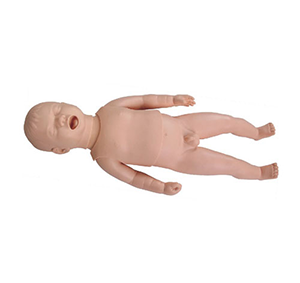Homepageпјҡ NEWS >> How can I use a preterm baby model to help learn nursing skills
The care of premature infants involves a series of complex operations and skills, and these nursing measures must be completed in the shortest possible time to protect the survival and health of premature infants. Premature babies often face problems such as difficulty in thermoregulation, immature respiratory systems, and weak immunity, so accurate care skills are crucial. In clinical education, the use of preterm care model can significantly improve the operational skills of medical staff and help them better cope with the special care needs of preterm infants.

1. Simulates premature infant care to improve the accuracy of skill operation
Preterm care model is a highly simulated teaching tool that can simulate the body shape, physical signs and common physiological states of preterm infants. The models are designed to be as close to the real world as possible, allowing students to practice life support, feeding, thermoregulation and other care operations for premature babies without risk. Industry experts point out that using preterm models to help learn nursing skills can accelerate the learning process and ensure that students can operate more proficiently in a clinical setting.
2. Training for emergency situations
In the care of preterm infants, emergency conditions are often encountered, such as apnea, suffocation, and hypothermia. How to deal with these situations accurately in the first time is the key to the care of premature infants. Through the preterm model, participants are able to simulate these emergencies and practice taking the necessary interventions quickly and accurately. For example, models are able to simulate choking in premature babies, and students can practice how to perform airway management and respiratory support.
Experts point out that the "feedback mechanism" in the preterm model is crucial for learners. In the process of operation, the model can provide real-time feedback to help students timely understand whether their operation is correct and further improve nursing skills. In this way, students are able to experience the emergency handling process in a low-risk environment, thereby enhancing hands-on skills and reducing the risk of improper handling in a real clinical setting.
3. Simulated feeding and nutritional support
Preterm infants usually require special feeding methods, such as nasogastric tube feeding, breast milk fortification, etc. Through the preterm care model, students can practice how to provide scientific and safe feeding for preterm infants. The model can simulate the common problems in the feeding process of premature infants, such as difficulty in sucking, immature swallowing reflex, etc., to help students master the feeding skills of premature infants and reduce the problems that may occur in the feeding process such as aspiration and coughing.
4. Clinical significance: Reduce medical errors and improve patient safety
The care of premature babies involves high-risk medical operations, and any small mistake can have a serious impact on the health of the baby. Therefore, the use of preterm care models not only helps to improve learners' operational skills, but also significantly reduces the occurrence of medical errors. Through simulation training, learners can gain experience in a risk-free environment, thereby improving safety in their clinical practice.
The data show that repeated training through preterm care models can help reduce the error rate of novice health care workers handling preterm babies in real-world clinical Settings and improve the quality of care by about 20% (source: Medical Simulation and Clinical Care Quality Study). This simulation training model has important clinical significance for ensuring patient safety and reducing medical errors.
Conclusion
As an important tool in medical education, preterm care models can help health care professionals improve their skills, respond to emergencies, strengthen teamwork, improve decision-making, and reduce medical errors. In the actual nursing work, through the simulation training of premature baby models, medical staff can better understand and master the key elements of premature baby care, so as to provide better protection for the health of premature babies. This highly effective educational tool not only helps to enhance the clinical skills of the participants, but also provides strong support for patient safety.